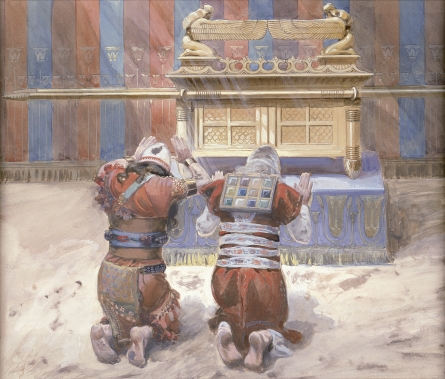 |
| Edward Burne-Jones (1833-1898),"Nativity" (1875), William Morris stained glass window, St. Martins in the Bull Ring, Birmingham city center, south window. |
This afternoon I read this post on John Gee's blog and wanted to repost it in it's entirety because I enjoyed reading it. Here it is:
An entire folk tradition has sprung up based on the translation of Luke 2:7 which explains that Jesus was laid in a manger “because there was no room for them in the inn” (KJV). The King James translators did not invent the phrase. Tyndale rendered the passage as “because there was no roume for them within, in the hostrey.” Both translations match the Vulgate, which says “non erat locus in diversorio” and a diversorium is an inn. Thus nativity plays will often include an innkeeper and his wife and other parts derived from this particular phrase in the scripture. Sometimes in flights of artistic fantasy Joseph wanders from inn to inn seeking lodging only to find them all full. Bethlehem was a small town when Jesus was born. How many inns did they have? In the scriptural accounts, it is in the singular; Bethlehem could not have had more than one. One suspects it did not have that many.
But there is something wrong here. Joseph and Mary came to Bethlehem because of the need to register for the census which was made for taxation purposes (Luke 2:1). If it was simply a matter of registering for the poll tax, the tax that Rome levied on its subjects simply for drawing breath, then they could register wherever they were. They could certainly register in Nazareth without having to travel to Bethlehem. The reason that they would have to register in Bethlehem is if they owned property there.[1] But if they owned property in Bethlehem, why were they staying in an inn?
The Greek word translated as “inn” is καταλύματι, the dative form of καταλύμα. What is a καταλύμα? It “designates the residence of the king or the general when he is staying outside” his normal residence.[2] It can also refer to an assigned lodging for a soldier or functionary.[3] It can also refer to an inn.[4] Thus a καταλύμα is “a lodging where one goes, where one stays for a time. The temporary character is constant.”[5]
Thus the word designates wherever Joseph and Mary were staying temporarily. Since Joseph either wholly or partly owned property, he would have either been staying with the relatives who occupied the property (in the case of part ownership) or with the tenants who were renting (in the case of whole ownership). As houses tended to be on the small side, the couple perhaps might have felt that there was more privacy with the animals. By the time the wise men visited, they were back in the house (Matthew 2:11).
A careful reading of the nativity story indicates that there is no room for an inn.
[1] Sherman L. Wallace, Taxation in Egypt from Augustus to Diocletian (New York: Greenwood Press, 1937), 98-104.
[2] Geneviève Husson, OIKIA: le vocabulaire de la maison privée en Égypte d’après les papyrus grecs (Paris: La Sorbonne, 1983), 133.
[3] Husson, OIKIA, 134.
[4] Husson, OIKIA, 134-35.
[5] Husson, OIKIA, 135.






